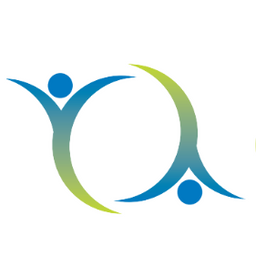Topic: Emerging Technology
My Session Status
Presentation Topic: Emerging Technology
An augmented reality (AR) application design for teaching and learning K-12 mathematics concepts
Hunhui Na, Florida State University and Ji Yae Bong, Concordia University
Track: Institutional technology/ Volet: La technologie institutionnelle
Type: Innovative teaching, technology or design technique:
Name of the innovation:
An augmented reality (AR) application design for teaching and learning K-12 mathematics concepts
Type of innovation: Design
How the innovation works:
STEM augmented reality applications have received a tremendous amount of attention as a potential tool to cultivate K-12 students’ STEM-related competencies in the last decade (Bacca et al., 2014; Ibáñez & Delgado-Kloos, 2018). However, the acceptance of AR applications for teaching and learning STEM contents remain low in practice. Some challenges that hinder using AR applications include the high cost, teachers’ burdens to facilitate learning activities using AR applications, and the lack of easy-to-use AR applications; students’ not-readiness of using AR tools (Cai et al., 2017; Chang et al., 2016; Laine et al., 2016). Only well-designed AR applications can enhance teachers and students’ acceptance and successfully facilitate real understanding of difficult STEM concepts. This practical proposal describes the initial design and development phase of a mobile AR application, especially focusing on three types of learning supports: AR app-related, cognitive, and affective supports.
How to apply the technique:
3D Shape in AR, the mobile AR application, has been designed as a teaching and learning tool for K-12 students’ understanding of three dimensional geometric shapes and related mathematical concepts. To maximize the pedagogical potentials of the mobile AR application in K-12 classroom context, two different modes of AR, marker-based and plane-detection AR, were implemented. Teachers can use either or both different AR modes based on students’ technological readiness.
Three types of learning support were embedded in our initial design: (a) AR app-related supports help students technically use diverse functions of the application. This type of support includes the direct guidance on how to use each function (e.g., choosing the different colors and types of 3D shapes, printing origamis) and how to solve game levels with icons and messages. (b) Cognitive supports help students actively engage in their learning by processing information from augmented sources, visual cues, cognitive activities, hands-on missions; having multiple attempts to fail and recover; and experimenting freely though gameplay. (c) Affective supports help students experience positive emotions while learning using the AR application. The affective supportive features include gamified contents, sharing their works using QR-codes with their friends.
Capturing Reality: Using Photogrammetry in Education
Capturer la réalité: l'utilisation de la photogrammétrie en education
Ping Ng and Daniel Dorion, KnowledgeOne
Track: Learning experience design/ Volet: Conception des expériences d’apprentissage
Type: Case study in innovation
Name of the case: Immortalizing Landmarks: the Wing's Factory in Montreal's Chinatown
Focus of the case: Technology
Background:
In 2021, activists in Montreal's Chinatown sounded the alarm about real estate developers purchasing a large amount of land within the historic neighborhood. There were concerns that the developers could significantly alter the landmarks of the area. One of these landmarks is the Wing's Noodle Factory building, built in 1826.
Problem addressed by the case:
There is a risk that the building could be demolished or significantly altered by its new owners. This could potentially mean losing access to this 200 year old piece of Montreal history.
Solution devised:
Photogrammetry allows us to capture physical objects and spaces with photorealistic qualities and create virtual copies at reasonable costs in money and in time.
The eConcordia team went on site in late 2021 and scanned the exterior of the Wing's building using photogrammetry techniques.
Process for developing the solution:
We had given ourselves a set of objectives:
- If possible, the content needed to be as immersive as possible, given that the landmark could disappear
- It needed to be realistic, to retain as much of the information as possible, in the rawest form possible
- The resulting output must be versatile: the information we extract must be easily usable and reusable
- It must not be cost or time prohibitive: it cannot take a very long time, or cost a lot to do.


